Combined inhibition of de novo glutathione and nucleotide biosynthesis is synthetically lethal in glioblastoma
- PMID: 40253695
- PMCID: PMC12204606
- DOI: 10.1016/j.celrep.2025.115596
Combined inhibition of de novo glutathione and nucleotide biosynthesis is synthetically lethal in glioblastoma
Abstract
Understanding the mechanisms by which oncogenic events alter metabolism will help identify metabolic weaknesses that can be targeted for therapy. Telomerase reverse transcriptase (TERT) is essential for telomere maintenance in most cancers. Here, we show that TERT acts via the transcription factor forkhead box O1 (FOXO1) to upregulate glutamate-cysteine ligase (GCLC), the rate-limiting enzyme for de novo biosynthesis of glutathione (GSH, reduced) in multiple cancer models, including glioblastoma (GBM). Genetic ablation of GCLC or pharmacological inhibition using buthionine sulfoximine (BSO) reduces GSH synthesis from [U-13C]-glutamine in GBMs. However, GCLC inhibition drives de novo pyrimidine nucleotide biosynthesis by upregulating the glutamine-utilizing enzymes glutaminase (GLS) and carbamoyl-phosphate synthetase 2, aspartate transcarbamoylase, and dihydroorotatase (CAD) in an MYC-driven manner. Combining BSO with the glutamine antagonist JHU-083 is synthetically lethal in vitro and in vivo and significantly extends the survival of mice bearing intracranial GBM xenografts. Collectively, our studies advance our understanding of oncogene-induced metabolic vulnerabilities in GBMs.
Keywords: CP: Cancer; CP: Metabolism; TERT; brain tumors; cancer; glioblastoma; glutamine metabolism; glutathione; in vivo stable isotope tracing; metabolic synthetic lethality; metabolomics; nucleotide biosynthesis; telomerase reverse transcriptase.
Copyright © 2025 The Authors. Published by Elsevier Inc. All rights reserved.
Conflict of interest statement
Declaration of interests T.G.G. has consulting and equity agreements with Auron Therapeutics, Boundless Bio, Coherus BioSciences, and Trethera Corporation.
Figures
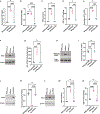
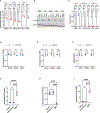

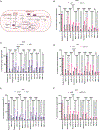
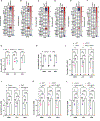
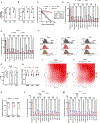
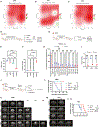
Similar articles
-
Telomerase reverse transcriptase induces targetable alterations in glutathione and nucleotide biosynthesis in glioblastomas.bioRxiv [Preprint]. 2023 Nov 16:2023.11.14.566937. doi: 10.1101/2023.11.14.566937. bioRxiv. 2023. PMID: 38014170 Free PMC article. Preprint.
-
Combinatorial targeting of glutamine metabolism and lysosomal-based lipid metabolism effectively suppresses glioblastoma.Cell Rep Med. 2024 Sep 17;5(9):101706. doi: 10.1016/j.xcrm.2024.101706. Epub 2024 Sep 4. Cell Rep Med. 2024. PMID: 39236712 Free PMC article.
-
HDAC6 and USP9X Control Glutamine Metabolism by Stabilizing GS to Promote Glioblastoma Tumorigenesis.Adv Sci (Weinh). 2025 Jul;12(25):e2501553. doi: 10.1002/advs.202501553. Epub 2025 Mar 31. Adv Sci (Weinh). 2025. PMID: 40162736 Free PMC article.
-
Buthionine sulfoximine and chemoresistance in cancer treatments: a systematic review with meta-analysis of preclinical studies.J Toxicol Environ Health B Crit Rev. 2023 Nov 17;26(8):417-441. doi: 10.1080/10937404.2023.2246876. Epub 2023 Aug 22. J Toxicol Environ Health B Crit Rev. 2023. PMID: 37606035
-
The Epithelial-to-Mesenchymal Transition-Like Process in Glioblastoma: An Updated Systematic Review and In Silico Investigation.Med Res Rev. 2017 Mar;37(2):271-313. doi: 10.1002/med.21408. Epub 2016 Sep 12. Med Res Rev. 2017. PMID: 27617697
Cited by
-
Stable isotope tracing in human plasma-like medium reveals metabolic and immune modulation of the glioblastoma microenvironment.bioRxiv [Preprint]. 2025 Apr 26:2023.05.29.542774. doi: 10.1101/2023.05.29.542774. bioRxiv. 2025. PMID: 37398280 Free PMC article. Preprint.
References
-
- Shay JW, Reddel RR, and Wright WE (2012). Cancer and Telomeres—An ALTernative to Telomerase. Science 336, 1388–1390. - PubMed
MeSH terms
Substances
Grants and funding
LinkOut - more resources
Full Text Sources
Medical
Research Materials
Miscellaneous

